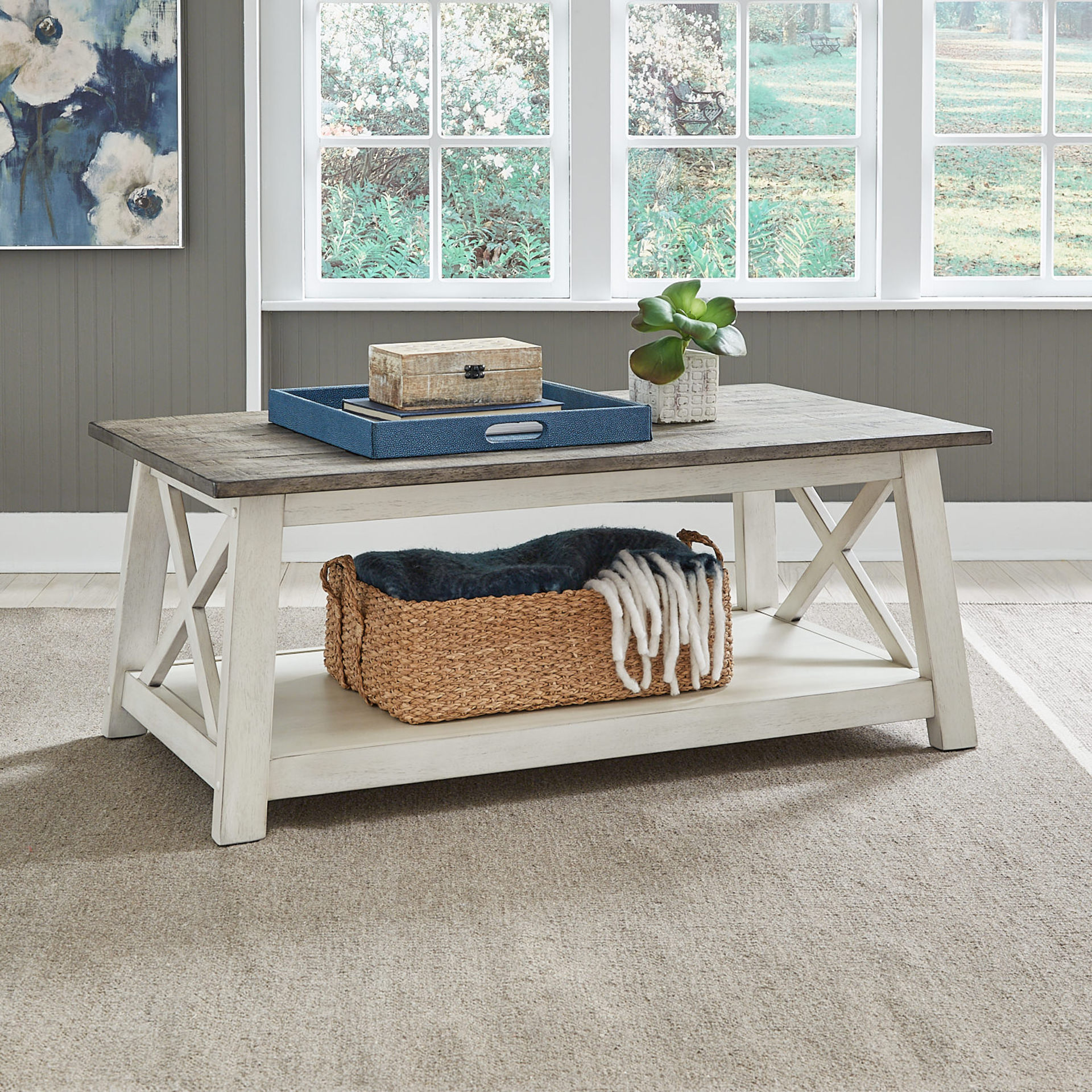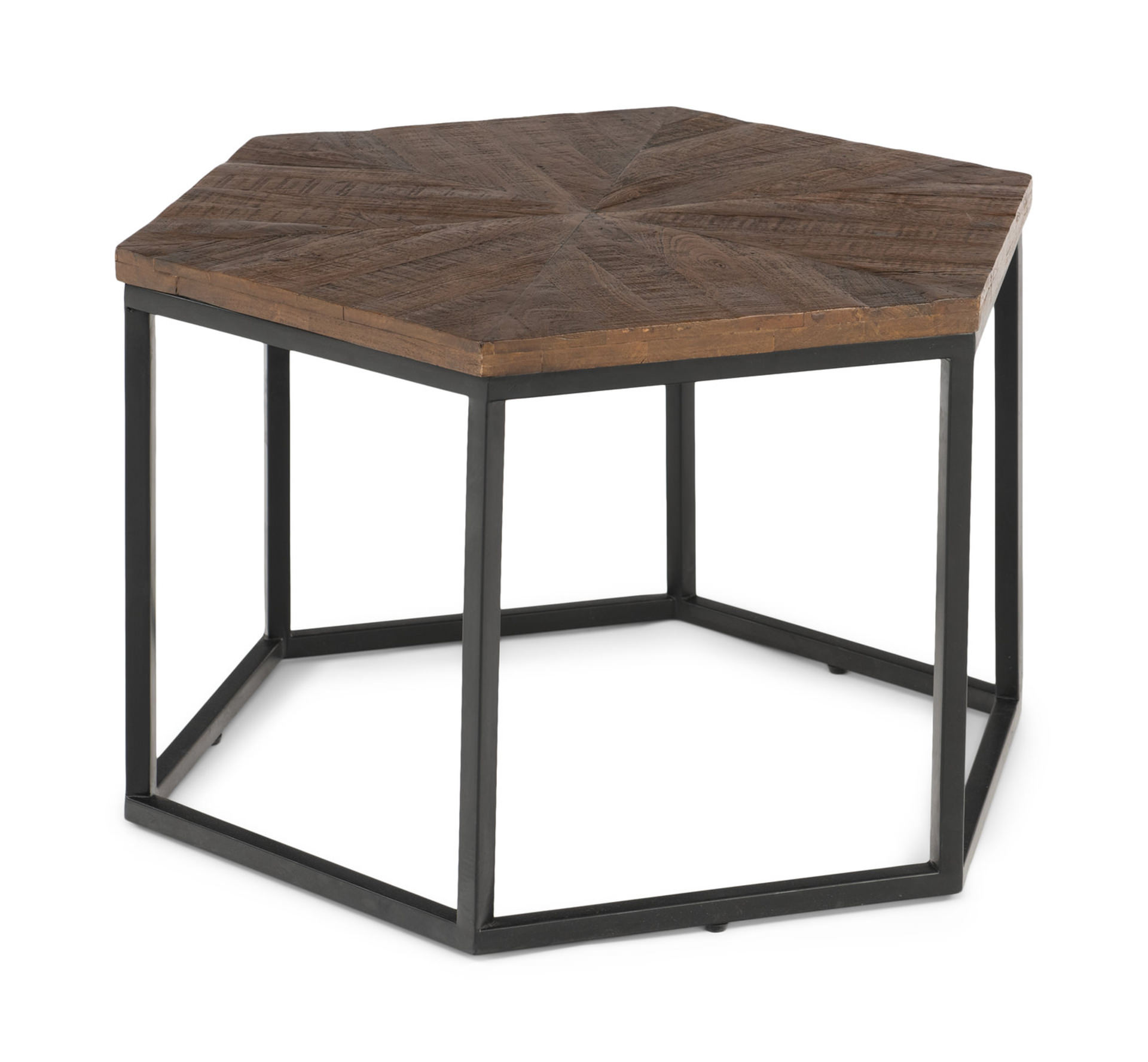Coffee Table Buying Guide

What’s the first thing you see when you walk into a living room? It might be a stylish sofa or an arresting painting, but quite often it’s the coffee table. The coffee table’s central location frequently makes it a focal point of the room. Because it’s not as big as the sofa and the armchairs, some people tend to overlook this table when putting a room together. You shouldn’t. The right coffee table has the potential to tie a space together, to transform the ambiance or even to set the design direction for the room.
How Will You Use Your Coffee Table?
There are many ways to deploy a coffee table. It can be the point of focus or it might blend in with the other furnishings. You can set it in front of the sofa and leave it there. You might move it about or even store it away as an occasional table. Different coffee tables are suitable for different purposes.
Where Will It Go?
Living rooms and family rooms are the most popular spots for these tables. While you can put any kind of coffee table in either room, living room tables tend to be more formal. Also, you can use a more delicate table, for example, one with a glass top or with elaborate scrolling.
Family room tables get rougher treatment and need to be sturdier. Storage options such as shelves and drawers are useful anywhere, but they’ll generally get more use in a less formal room. A family room coffee table might need to resist spilled drinks, heavy objects and dirty hands. If there’s rowdy child’s play in this room, consider a table with rounded edges.
A Versatile Style Statement
In many rooms, the coffee table is an afterthought. People choose the sofa and chairs then pick a table that fits in. That’s fine, but it’s not the only way to choose a coffee table.
A coffee table can complement your existing style, but it can also contrast with the sofa and take the style in a new direction. Some people even design a room by starting with the coffee table then choosing other pieces that go with it. They pick a distinctive table that catches their fancy and imagine what kind of sofas and chairs might show it in the best light.
Whether these pieces take the lead or enhance what’s already present, coffee tables come in every style category. There are traditional rectangular wooden tables, casual and rustic tables, as well as functional tables with plentiful shelves and drawers. There are radically modernistic tables with metal and glass and with geometric designs.

Size Matters: Coffee Tables Large and Small
The size of the coffee table needs to be proportionate to the room. Even if your coffee table is a focal point, it should make its statement with its style and not by taking up excess real estate. Similarly, a table shouldn’t be so small that is disappears among the other furnishings. A good rule of thumb is to choose a table about two-thirds the length of the sofa.
Height is important, too. Compare its height to that of the sofa or other primary piece. It should be no higher than the sofa cushions and no more than an inch or two lower than the seat height.
If you have a large space and a long sofa or sectional (or more than one), you might consider clustered coffee tables. These can be any shape, and they can be pushed together or separated as best fits the occasion.
Finally, make sure that the coffee table doesn’t get in the way of your legs. Leave 12 to 18 inches between it and the sofa: enough distance to keep from knocking your knees, yet close enough to reach for a magazine or coffee cup.
Narrowing It Down to the Right One
Once you’ve generally decided how your coffee table will serve you, it’s time to look at shape, materials and the other specifics.
Shapes Both Familiar and Novel
Rectangular, round and oval coffee tables are just the start. Modern coffee tables come in shapes you may not have imagined.
- Rectangular. The rectangle is still the most popular shape, and there are good reasons, starting with its versatility. They’re available in any size and style. They provide a broad surface for drinks, plates and other items, all within easy reach. They can feature elegant carving or clean modern lines. For a subtle variation on the rectangle, consider a unit with rounded corners.
- Square. Sure, squares are rectangles, too. However, they function differently from their elongated siblings. They do well in areas with configurations involving sectionals, love seats and sets of chairs. They move about the room easily. When you slide them together to simulate a rectangular table, they deliver a look that’s uniquely theirs.
- Circular or oval. A round coffee table works well with large seating arrangements, since it provides a surface conveniently reached from more than one sofa or chair. Small oval tables can be just the right match for limited spaces. Rounded tables go with a variety of sofa shapes. They complement sofas with curvature and soften a room where couches and chairs have straighter lines. Circular and oval aren’t the only flavors of rounded. A kidney-shaped table, for example, is an unexpected eye-catcher in a contemporary room. As an added bonus, rounded coffee tables are safer in a room where kids and pets tend to be rambunctious.
- Non-traditional. Geometric tables are becoming not only more prevalent but also more forward in the shapes they assume. For example, a hexagonal top might sit above a sculpture-like cluster of metal legs. Often these tables reflect geometric details in the home such as pendants and mirror frames. The triangle is another shape that makes a distinctive statement. Most often its corners are rounded.

Imaginative Materials
Coffee tables are constructed from a variety of materials. Some are even upholstered.
- Wood. Wood has been and still is the number one choice, but that doesn’t mean that wooden tables are boring. Quite the opposite; there are more style choices in wooden tables than ever. Wooden tables can be carved and elegant or modern with sleek lines. Dark woods such as walnut and mahogany are traditional, light woods can be casual or farmhouse and distressed and reclaimed woods yield a rustic look. Sturdy painted wood goes well in family rooms. Wooden coffee tables tend to be durable units that promise many years of steady use.
- Glass. The big draw of glass is its airiness. It can make small spaces feel larger and emphasizes the light in the room. A glass table can be elegant in a formal room, modern in a contemporary or industrial room and, depending on the other materials in the table, an excellent fit in a rustic room. On the downside, glass can show fingerprints and other smudges. However, regular cleaning can make it a good option for any family.
- Metal. Metal is most often used in legs, paired with wooden or glass tops. It’s especially suited to modern and industrial styles. Some coffee tables actually have metal tops; hammered copper is an example.
- Mixed materials. You don’t have to settle for just one material if you don’t want to. Wood and glass often sit atop metal legs, but those three materials aren’t the only choices. For example, there are stone and marble table tops, and part or all of a coffee table can be wicker.
- Upholstered. A coffee table can be covered with upholstery such as leather or a tufted material. Some of these have lids that lift for storage; they blur the lines between a coffee table and an ottoman.

The Effects of Colors
When coffee tables were almost all wooden, it used to be that dark colors were formal and light colors less so. Today, however, lighter colors are cropping up everywhere. Creamy colors are often favored when they match room trim such as baseboards. Also, the trend toward gray furniture has extended to coffee tables as well.
Two-toned tables are another possibility. Often that consists of a light-colored wooden top and dark legs. The lighter portion brightens a room and adds some life, especially where there’s more of that color in the room. Dark tops with light legs present another interpretation that’s worth a second look.
Coffee Table with Storage
Extra storage is a useful addition in a living room coffee table and closer to a necessity in a family room. Some tables have drawers that keep papers, games and other clutter out of sight. Others have undertop shelves that work either for storage or displaying decor. Some tables have both. A coffee table ottoman is a cross between the two types of furniture with a liftable lid for more storage than a table alone can provide.
Other Useful Options
Some tables offer extra specialized features:
- Casters or wheels. If you want your table to go from room to room or even out of sight entirely, these features are useful for tables that will get frequently moved.
- Lift tops. A coffee table of standard height is ideal for drinks and conversation, but what if you want to play cards? What if you want to pull out your laptop and work from home on the sofa? There are tables that allow you to raise the top to a more convenient height for these occasions.
- Nesting tables. A nesting set consists of two or three tables that fit one under the other. They can be pulled out to hold drinks, papers and other items. Sometimes the smallest “table” is an ottoman. Often these tables have metal legs for space considerations, but the tops might be glass or wood. There are round, rectangular and square versions.
Coffee Table Extras
You can go a classic route and plop a hefty book with pictures on your table, but there are other practical and attractive options. If you like a place to toss your keys and change, a tabletop bowl fits the bill. It’s good to have a few coasters in a coaster holder that are continuously ready for drinks. And a well-chosen tabletop sculpture can brighten up not only the coffee table but also the entire room.
Also, some people purchase end tables that match their coffee tables. Whether end tables match is a matter of personal taste; complementary or contrasting end tables work just as satisfactorily in a well-designed room.
A Coffee Table Is an Opportunity
If you’re just starting to design or remodel your room, move the selection of coffee table toward the top of the list, right up there with your choice of sofa and chairs. If you already have a room, a new coffee table is a cost-effective way to expand the space’s personality. You might choose to think beyond the traditional table, considering curved tables, two-tones and geometrics. Follow your imagination and picture the difference a coffee table can make in your living room or family room.